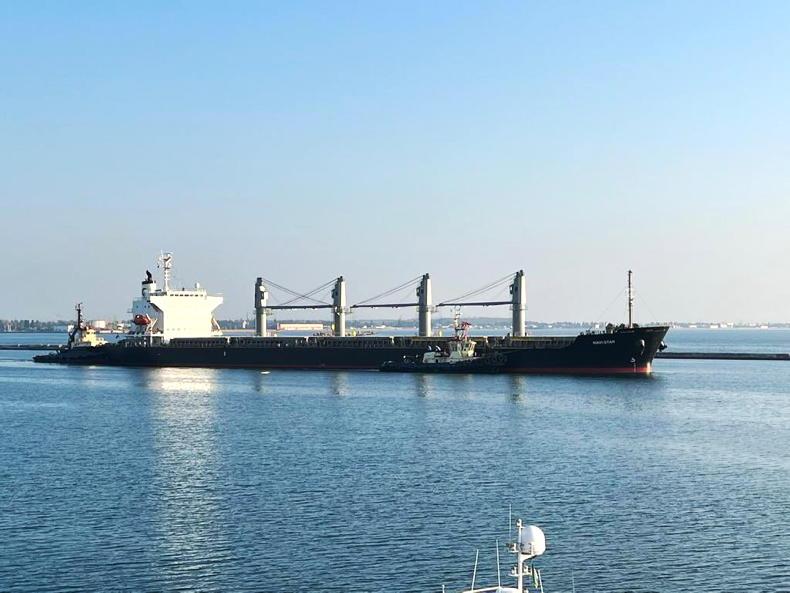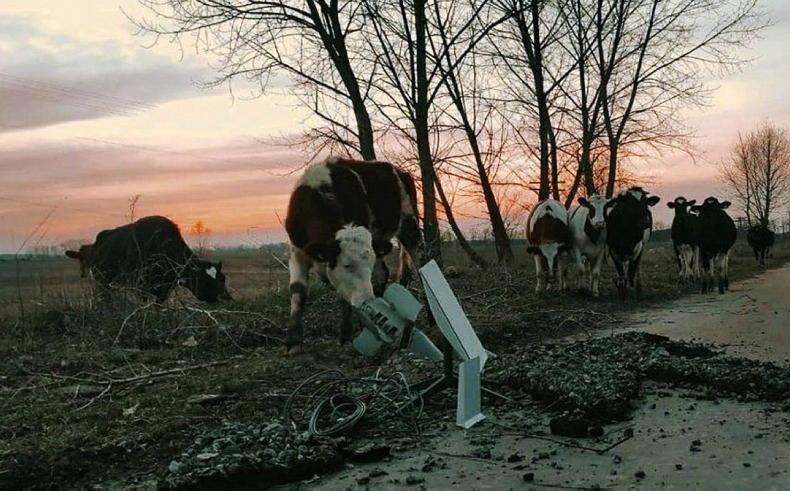Indirect losses in Ukrainian agriculture due to Russia’s invasion have reached some €33bn, according to the country’s Ministry of Agrarian Policy.
The losses, estimated as of 15 September 2022, include lost farm income from reduced production and lower domestic prices and input cost increases, fuelled by the ongoing war.
The analysis was published in the Review of indirect losses from the war in agriculture of Ukraine, prepared by the Centre for Food and Land Use Research and the Ministry of Agrarian Policy and Food of Ukraine.
Exports
The ministry says that some €18bn of the losses to Ukrainian agriculture are the result of disruptions in logistics and lower prices for the country’s farm exports.
It says that in mid-September, weighted average domestic prices for major export-oriented crops were 61% lower than before the Russian invasion at the end of February this year.

Export logistical challenges have hit farm incomes in Ukraine, says its Ministry of Agrarian Policy. / Turkish ministry of defence
A decrease in agricultural crop production led to €14bn in losses when compared with production levels prior to the war.
The reduced output has occurred in annual crops in the 2022 calendar year such as sunflower, wheat, corn and barley, as well as winter crops for the 2023 calendar year.
Ukraine’s Ministry of Agrarian Policy says decreased livestock production has led to €337m in losses.
It says the reduction of production in liveweight terms, as well as the annual decrease in the production of milk, eggs and bee products, is estimated to have hit 10%.
Input costs
The ministry says increases in farm production costs such as fertilisers and fuel have led to a loss of some €833m for its farm sector.
The overall €33bn figure is up some €10bn on what the ministry said agricultural losses due to the war were when it completed a survey in June of this year.
The Ukrainian officials explained that the losses have be determined by calculating what agricultural production would have been like in 2022 without the invasion of Russian troops.
For the production of annual crops, the average production levels for 2020-2021 were used.
Read more
Agreement reached to extend Black Sea grain deal
EU proposes fertiliser market transparency amid surging profits
Ukraine’s farmers: 'too many people are dependent on us to quit'
Indirect losses in Ukrainian agriculture due to Russia’s invasion have reached some €33bn, according to the country’s Ministry of Agrarian Policy.
The losses, estimated as of 15 September 2022, include lost farm income from reduced production and lower domestic prices and input cost increases, fuelled by the ongoing war.
The analysis was published in the Review of indirect losses from the war in agriculture of Ukraine, prepared by the Centre for Food and Land Use Research and the Ministry of Agrarian Policy and Food of Ukraine.
Exports
The ministry says that some €18bn of the losses to Ukrainian agriculture are the result of disruptions in logistics and lower prices for the country’s farm exports.
It says that in mid-September, weighted average domestic prices for major export-oriented crops were 61% lower than before the Russian invasion at the end of February this year.

Export logistical challenges have hit farm incomes in Ukraine, says its Ministry of Agrarian Policy. / Turkish ministry of defence
A decrease in agricultural crop production led to €14bn in losses when compared with production levels prior to the war.
The reduced output has occurred in annual crops in the 2022 calendar year such as sunflower, wheat, corn and barley, as well as winter crops for the 2023 calendar year.
Ukraine’s Ministry of Agrarian Policy says decreased livestock production has led to €337m in losses.
It says the reduction of production in liveweight terms, as well as the annual decrease in the production of milk, eggs and bee products, is estimated to have hit 10%.
Input costs
The ministry says increases in farm production costs such as fertilisers and fuel have led to a loss of some €833m for its farm sector.
The overall €33bn figure is up some €10bn on what the ministry said agricultural losses due to the war were when it completed a survey in June of this year.
The Ukrainian officials explained that the losses have be determined by calculating what agricultural production would have been like in 2022 without the invasion of Russian troops.
For the production of annual crops, the average production levels for 2020-2021 were used.
Read more
Agreement reached to extend Black Sea grain deal
EU proposes fertiliser market transparency amid surging profits
Ukraine’s farmers: 'too many people are dependent on us to quit'







 This is a subscriber-only article
This is a subscriber-only article











SHARING OPTIONS: